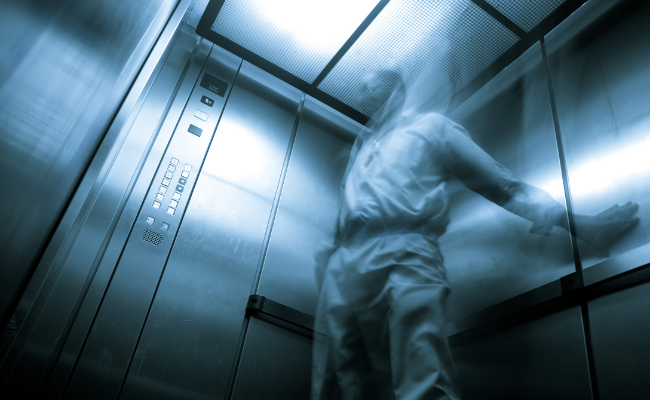How to Treat Claustrophobia?
- November 03, 2023
- No Comments

What is Claustrophobia?
Claustrophobia, categorized as a specific phobia, involves an intense and irrational fear of enclosed spaces, such as elevators, crowded rooms, tunnels, or small areas where escape is challenging. Those with claustrophobia often experience overwhelming anxiety or panic attacks in these situations, significantly impacting their daily lives. Unlike common fears, phobias like claustrophobia exhibit heightened and irrational intensity, exceeding the actual threat posed by the feared spaces. Essentially, phobias reflect a complex interplay of psychological factors amplifying fear responses beyond objective justification.
Why Does Claustrophobia Occur?
The development of claustrophobia is complex and multifaceted, influenced by a combination of genetic, environmental, and psychological factors. Some individuals may have a genetic predisposition to anxiety disorders, making them more susceptible to developing specific phobias like claustrophobia. Traumatic experiences, such as being trapped in a confined space or witnessing someone else's distress in such a situation, can contribute significantly to the development of this fear.
Moreover, individuals with a history of panic attacks or other anxiety disorders may be more prone to experiencing claustrophobic reactions. The fear is often rooted in the anticipation of being unable to escape, losing control, or feeling trapped, and these thoughts can manifest as irrational and distressing.
How to Identify Claustrophobia?
Recognizing claustrophobia involves understanding the signs and symptoms associated with this specific phobia. Individuals grappling with claustrophobia may exhibit the following indicators:
- Intense Fear: Claustrophobic individuals experience an overwhelming fear when confronted with confined spaces, leading to heightened anxiety or panic attacks.
- Physical Symptoms: The fear of enclosed spaces can trigger various physical symptoms, including a rapid heartbeat, sweating, trembling, dizziness, nausea, and shortness of breath.
- Avoidance Behavior: To cope with their fear, individuals with claustrophobia may engage in avoidance behaviors, going out of their way to evade situations that trigger their anxiety. This avoidance can significantly impact their daily activities and quality of life.
- Irrational Thoughts: Claustrophobic individuals often harbor irrational thoughts related to being trapped, unable to escape, or losing control in confined spaces. These thoughts can intensify the fear response and contribute to heightened anxiety.
Treatment Solutions for Claustrophobia
Addressing claustrophobia requires a comprehensive approach that considers the individual's unique circumstances. Several effective treatment options are available:
- Cognitive-Behavioral Therapy (CBT): CBT is a well-established and widely used therapeutic approach for claustrophobia. Therapists work with individuals to identify and challenge negative thought patterns associated with their fear. Through gradual exposure to confined spaces, patients learn to manage their anxiety and develop effective coping mechanisms.
- Exposure Therapy: This form of therapy involves systematically exposing individuals to situations that trigger their claustrophobia. The exposure is gradual and controlled, allowing individuals to confront their fears in a safe environment. Over time, repeated exposure helps desensitize the fear response, enabling individuals to better manage their reactions.
- Relaxation Techniques: Learning and practicing relaxation techniques, such as deep breathing, progressive muscle relaxation, and mindfulness, can be beneficial for managing anxiety associated with claustrophobia. These techniques are often integrated into therapy sessions and can also be employed independently by individuals.
- Medication: In certain cases, medication may be prescribed to alleviate symptoms of claustrophobia. Anti-anxiety medications or antidepressants may be recommended, especially if the phobia is severe or significantly impairs daily functioning. However, medication is usually used in conjunction with psychotherapy for optimal results.
Benefits of Treating Claustrophobia
- Improved Quality of Life: Successfully addressing claustrophobia can lead to a substantial improvement in an individual's overall quality of life. By overcoming avoidance behaviors, individuals can actively engage in activities and environments they once feared, expanding their horizons.
- Enhanced Mental Health: Treatment for claustrophobia often involves addressing underlying anxiety issues. As individuals learn to manage their fears, they may experience a reduction in overall anxiety levels, contributing to an improved state of mental well-being.
- Increased Independence: Overcoming claustrophobia enables individuals to become more independent and self-reliant. They can participate in social events, travel, and navigate various environments without the overwhelming fear that once held them back.
- Better Relationships: Claustrophobia can strain relationships, as individuals may struggle to participate in shared activities. Successfully managing this phobia can lead to healthier interpersonal relationships, fostering a sense of connection and understanding.
Comments (0)